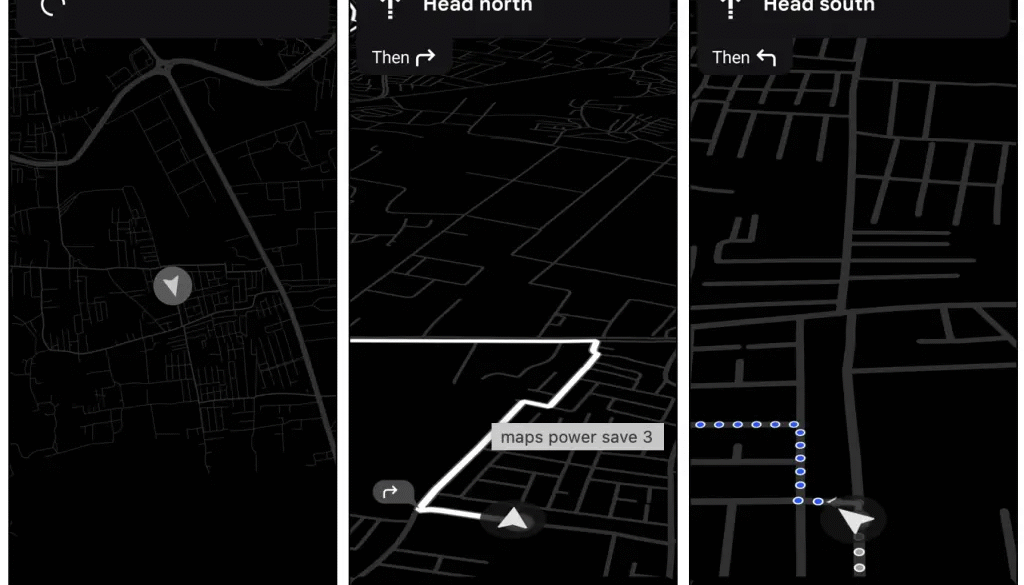Google Maps is testing a new monochrome power-saving mode for Android users
Google is testing a new “extreme power-saving” mode for Google Maps, aimed at helping users navigate safely when their phone battery is running dangerously low.
According to a teardown of the latest beta (v25.44.03.824313610), the feature introduces a monochrome map interface designed to conserve energy without sacrificing navigation accuracy — a potential game-changer for travelers, cyclists, and commuters who rely on the app for directions during long trips.
A simplified map that saves energy
In the new mode, Google Maps replaces its colorful interface with a minimal black-and-white layout, showing only essential elements such as:
- The route path, highlighted in blue
- Compass arrow and current location marker
- ETA (Estimated Time of Arrival) and remaining distance
All other details — including landmarks, street names, and complex overlays — are stripped away to reduce display and processing demands.
Despite the simplified visuals, voice-guided navigation remains fully functional, ensuring users can still follow directions safely without looking at the screen.
Works independently of Android’s battery saver
Unlike regular battery-saving settings that depend on the phone’s system power mode, this new Google Maps feature functions independently.
That means users can manually activate it inside the Maps app — even if the system-wide battery saver is off.
According to reports, the feature supports driving, walking, and cycling modes, but public transit navigation may not be included initially due to higher data requirements.
Addressing Maps’ long-standing battery problem
Navigation apps like Google Maps are notorious for draining smartphone batteries, primarily because of:
- Continuous GPS tracking
- High screen brightness during use
- Real-time data fetching and 3D rendering
The new monochrome mode aims to reduce both visual processing and power draw, potentially extending the usable navigation time during emergencies or long outdoor trips without charging access.
Experts note that this feature could particularly benefit walkers and cyclists, who typically don’t have charging ports available, but it will also prove valuable for drivers on extended routes or when traveling in low-power situations.

Still in testing — no official release date yet
As of now, the power-saving mode remains under testing in Google Maps Beta for Android, and Google has not officially confirmed a rollout date.
However, if successfully implemented, this feature could become one of the app’s most practical updates — helping users reach their destinations safely even on a dying battery.

